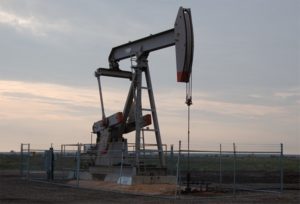 WTI and Brent futures were slightly higher during afternoon trade in Europe today. The conflict in Iraq, OPECs second-top oil producer, boosted prices to nine-month highs last week, and continued to support. Meanwhile, natural gas futures dropped, and weather patterns project warmer days to follow for top-consumer US.
WTI and Brent futures were slightly higher during afternoon trade in Europe today. The conflict in Iraq, OPECs second-top oil producer, boosted prices to nine-month highs last week, and continued to support. Meanwhile, natural gas futures dropped, and weather patterns project warmer days to follow for top-consumer US.
West Texas Intermediate futures for settlement in July traded for $107.05 per barrel at 14:31 GMT on the New York Mercantile Exchange, up 0.13%. Prices ranged from $106.73 to $107.54 per barrel. The US benchmark added about 4% last week, reaching a nine-month high at $107.68 on Friday, driven by the risk-off mentality of traders ahead of the weekend, with Iraq still in the danger zone.
Meanwhile on the ICE in London, Brent futures due in August stood for a 0.17% gain at $112.65 per barrel at 14:31 GMT. Daily high and low stood at $113.28 and $112.33 per barrel, respectively. Brent’s premium to August WTI stood at $6.30, after Friday’s closing margin of $6.29. The European brand also gained about 4% last week, and also reached a nine-month high at $114.07 on Friday.
Iraq
Iraq dominated oil markets late last week, as an Islamist organization, linked with al-Qaeda and boasting up to 5 000 fighters, according to the BBC, launched assaults on towns and army bases across the northwestern half of the country. The group, called ISIL (Islamic State in Iraq and the Levant), is a Sunni extremist brigade, fighting against a Shia-led government in Iraq.
Iraqi authorities reported “successful counterattacks” and claimed to have retaken a number of towns over the weekend. A major counter-offensive against the militia-controlled city of Tikrit will probably take place soon, the BBC reported.
ISIL, which is composed mainly of religious extremist, is said to also be employing former Iraqi military officers and soldiers, who were loyal to the late dictator Saddam Hussein, himself a Sunni. Other than former military and extremists, some tribal leaders have also expressed their loyalties to the ISIL, while others have declared otherwise, sending troops to aid Baghdad’s military. Meanwhile, Shia clerics have announced a “Call-to-arms” for volunteers to join the fight against the Sunni-led onslaught.
On the international level, Iran and the US expressed readiness to work together, with the goal of halting the extremists’ advance in Iraq and helping the country battle the “terrorists” (Iran is the only country, other than Iraq, to be populated mostly by Shia Muslims). The US has deployed an aircraft carrier in the Gulf, and US Secretary of State John Kerry said drone strikes and other airstrikes on the militants were being considered.
“When you have people murdering, you have to stop that. And you do what you need to do if you need to try to stop it from the air or otherwise,” he said.
Iraq is the second-largest OPEC oil producer, and shipped 5.43 million barrels from Basra last Wednesday alone, according to the oil minister.
“The immediate impact on Iraq’s crude oil exports is limited for now as the conflict in northern and western Iraq is far from the southern — and Shiite-controlled — oilfields and export terminals from where all current oil exports originate,” Goldman Sachs Group Inc. analysts Damien Courvalin, Anamaria Pieschacon and Jeffrey Currie said in a report, cited by Bloomberg.
Natural gas
Front month natural gas futures, due in July, dropped 1.33% at the New York Mercantile Exchange to trade for $4.676 per million British thermal units at 14:33 GMT. Prices ranged from $4.669 to a five-week high at $4.886 per mBtu. The contract closed about 0.8% higher for the week on Friday, after a massive 5.63% daily increase on Thursday.
Natural gas surged by the most in almost four months on Thursday after the Energy Information Administration reported that US natural gas inventories received a smaller-than-expected injection during the week ended June 6th. The government agency’s report showed stockpiles added 107 billion cubic feet (bcf), trailing projections for a 109-bcf gain. Nationwide natural gas inventories stood at 1.606 trillion cubic feet, the lowest level for this time of the year since 2003. Albeit consistently narrowing, inventories are still running a 31.2% deficit to the previous year’s level and a 35.3% deficit to the five-year average.
The EIA raised its inventories levels forecast through November, when heating demand picks up, to 3.424 trillion cubic feet, which would be more then enough to cover a harsh winter. This will require average injections of 87 billion cubic feet over the next 21 weeks, compared to the average injections of 78 bcf since April.





